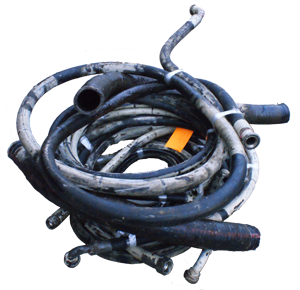We hear this question all the time. How long do hydraulic hose assemblies last? The bad news is that there is no simple answer to how long you should wait before replacing hose assemblies on your equipment. The good news is that there are signs that maintenance personnel can (and should) look for to determine when it’s time for preventive hose assembly replacement.

For most applications, a simple visual inspection once a month and preventive replacement of hoses every year or two is adequate. 80% of hose failures are attributable to external physical damage through pulling, kinking, crushing or abrasion of the hose and all the external damage can typically be checked for.
Keep a log of the hose replacements – especially replacements necessitated by a hose failure. You can use this log to estimate how long your hoses last in your application. You should only use this information for budgeting purposes and never as a substitute for regular visual inspection.
Inspect/replace critical hydraulic hose assemblies more often. Critical hose assemblies may be those that are close to the equipment operators or whose failure could result in injury or would cost a great amount of damage.
MPORTANT! When inspecting the equipment, never touch pressurized hoses with your hands, not even with gloved hands. If you are looking for a pinhole leak, use a piece of cardboard or wood to locate it, NEVER run your hand over the hose to find it. Hydraulic oil injection injuries are very serious and can result in amputation or even death. Read our related blog on hydraulic oil injection injuries (warning – pictures are graphic).
Replace hose assemblies if you find any of the following conditions:
Oil leaking around fittings or along the hose
Crushed hoses
Abrasion – any exposed wire reinforcement is a sure sign of need for replacement
Any significant damage to the outer cover beyond scuffs and small nicks
Twisted hoses (may indicate a need for a swivel or different routing)
Kinks (may indicate incorrect routing – bend radius below minimum specified by the manufacturer)
Cracked or corroded fittings (red rust is cause for concern, white oxidation is acceptable)
